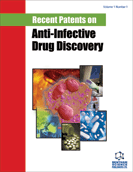Abstract
Background: There are few studies occupationally profiling as well as using Geographic information system (GIS) to map human leptospirosis. There are no detailed, municipality-level, epidemiological maps in Colombia neither in South America. We developed such maps for the Coffee-triangle region, Colombia and assess some occupational issues. Methods: surveillance cases data (2007-2011) were used to estimate the annual incidence rates (cases/100,000 population) of leptospirosis to develop the first maps of disease in the 53 municipalities of the Coffee-triangle region of Colombia. GIS used was Kosmo® 3.1. Five thematic maps were developed according to municipalities and years. Using labor official information, analyses between agriculture (harvested areas) with disease occurrence was done (linear regression). Results: Between 2007 and 2011, 786 cases were reported (77.8% from one department, Risaralda), for a cumulated rate of 32.18 cases/100,000 population. The highest rate was reported in the less developed municipality of one department (Pueblo Rico, Risaralda) with 1535.05 cases/100,000 population (187 cases, 2009). Armenia (Quindio department capital city), reported 23.41 cases/100,000pop (2011). In those patients with identified occupations, 33.3% were agriculture workers, finding a significant relationship between the number of cases in 2008 and the harvested area by municipality (r2=0.48; p=0.0083). Conclusion: one of the 53 municipalities contributed with almost a quarter of the cases. Agriculture was significantly associated with the incidence. Use of GIS-based epidemiological maps allow to focus actions in prevention and control for risk zones for leptospirosis which still represents a significant issue in the region and Colombia, particularly in agriculture workers.
Keywords: Colombia, epidemiology, geographic information systems, leptospirosis, occupational diseases, occupational health.
 31
31 2
2 1
1 1
1





















